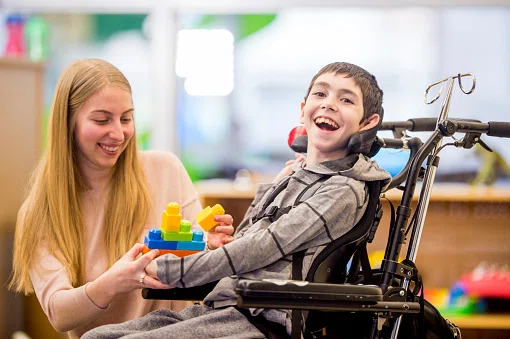


Gene Therapy Breakthrough
for Children with SMA
Game-changing gene therapy has been trialled across Sydney Children’s Hospitals Network (SCHN) to help children diagnosed with Spinal Muscular Atrophy (SMA), a devastating and fatal genetic condition.
SCHN was the only Australian site selected to participate in the global SPR1NT trial, which enrolled 29 children in the US, Asia-Pacific and Europe.
Patients were given a single dose of Zolgensma®, a novel viral vector-based gene replacement therapy that delivers a functioning copy of the defective gene that causes SMA into the patient’s cells, before their symptoms start.
Zolgensma® makes up for the missing or non-working survival motor neuron 1 (SMN1) gene, which helps motor neurons work properly. The new gene tells motor neuron cells to produce more survival motor neuron (SMN) protein, which motor neuron cells need to survive and support muscle functions.
The results of the trial have been positive, with all 29 children alive and meeting developmental milestones. The final results of the SPR1NT trial were published in articles in Nature Medicine.
Site-based lead for the study and Paediatric Neurologist at Sydney Children’s Hospital Network and UNSW Sydney Associate Professor Michelle Farrar said the results of the trial were a potential game-changer for both clinicians and families affected by SMA.
“The results are extremely encouraging because not only are the children surviving with this therapy, but most are meeting the developmental milestones of any normal baby, which is unheard of,” Associate Professor Farrar said.
SMA affects the motor nerve cells in the spinal cord, causing progressive muscle weakness and preventing babies from being able to roll, sit up, crawl, walk and eventually breathe. Until recently, it was the leading genetic cause of infant death in Australia, occurring in one in every 10,000 births.
Most kinds of SMA are caused by a problem with the SMN1 gene. The gene does not make enough of a protein needed for the motor neurons to work normally. The motor neurons then break down and are unable to send signals to the muscles.
In SMA, the body uses some SMN protein produced by the SMN2 back-up gene; however, 90 per cent of the SMN protein that the SMN2 gene makes is not fully functional. Usually, the more copies of the SMN2 gene a person has, the less severe is their SMA.
Research trials have also shown that the earlier children receive gene therapy for SMA, the better the outcome.
“For several years NSW/ACT has been developing newborn screening readiness for SMA with a pilot study. The progressive loss of motor neurones is irreversible, so the longer it takes to confirm a diagnosis, the greater the damage,” Associate Professor Farrar said.
“By identifying infants with SMA before the onset of symptoms, early results suggest that we may be able to take what was considered a lethal disease, and turn that around with a one-time, single-dose infusion.”
Since the introduction of SMA into the newborn screening program in 2018, more than 300,000 babies have been screened, which has helped significantly with early identification of the condition.
However, each Australian jurisdiction manages its own newborn screening program and only babies born in NSW and the ACT are currently tested for SMA – although WA has committed to introducing its own program and Queensland recently released a statement announcing they will start in May 2023.
In addition to the newborn screening program, the NSW government has invested A$25 million to boost the state’s capability to manufacture viral vectors – the key components of this type of therapy – which holds great promise for novel treatments for other genetic diseases.
“Gene therapy has given hope to many people with a rare disease,” Associate Professor Farrar says. “We have to look at how we can safely translate this technology to develop treatments for other conditions and to a broader population. We also have to work out how to deliver the therapy into the healthcare system.”

